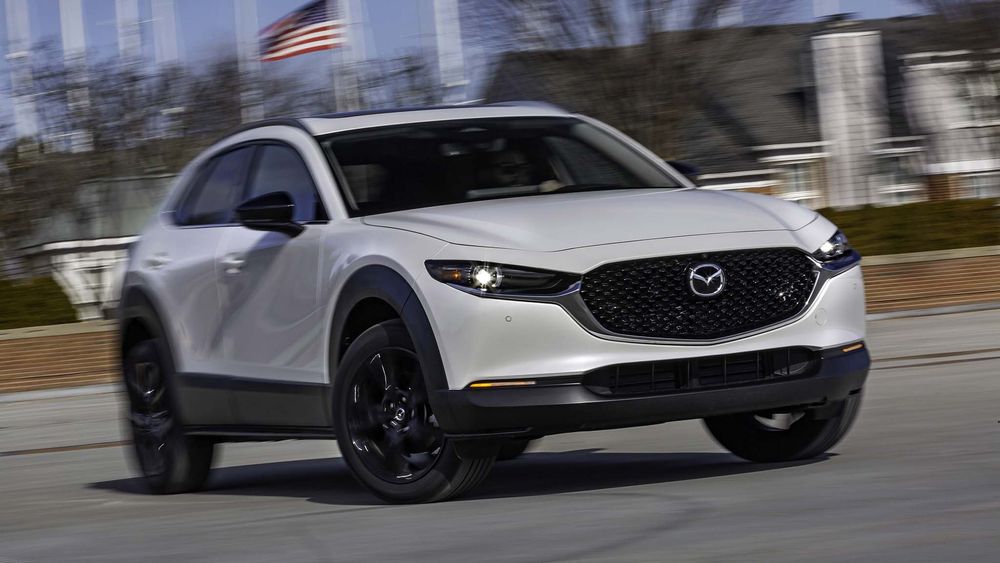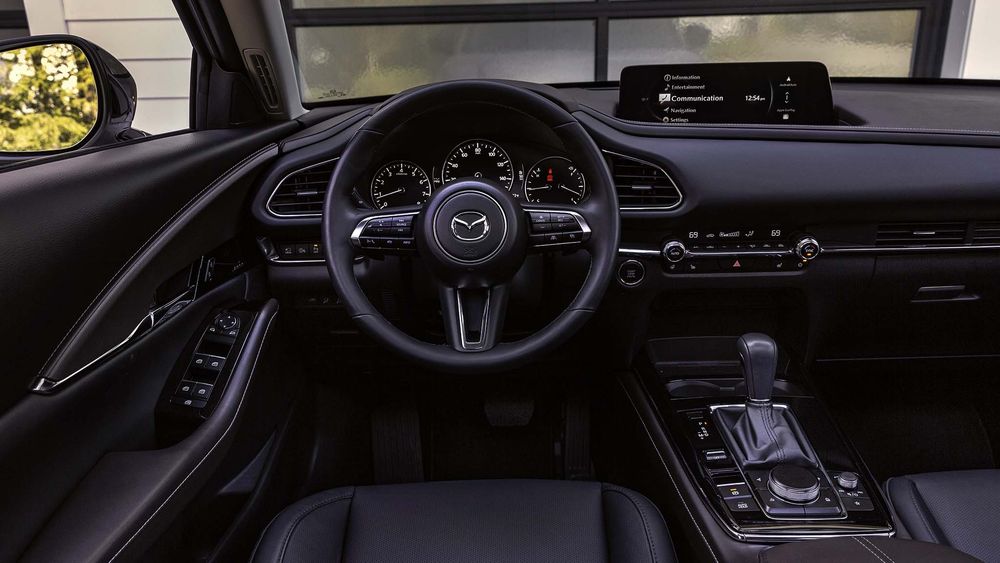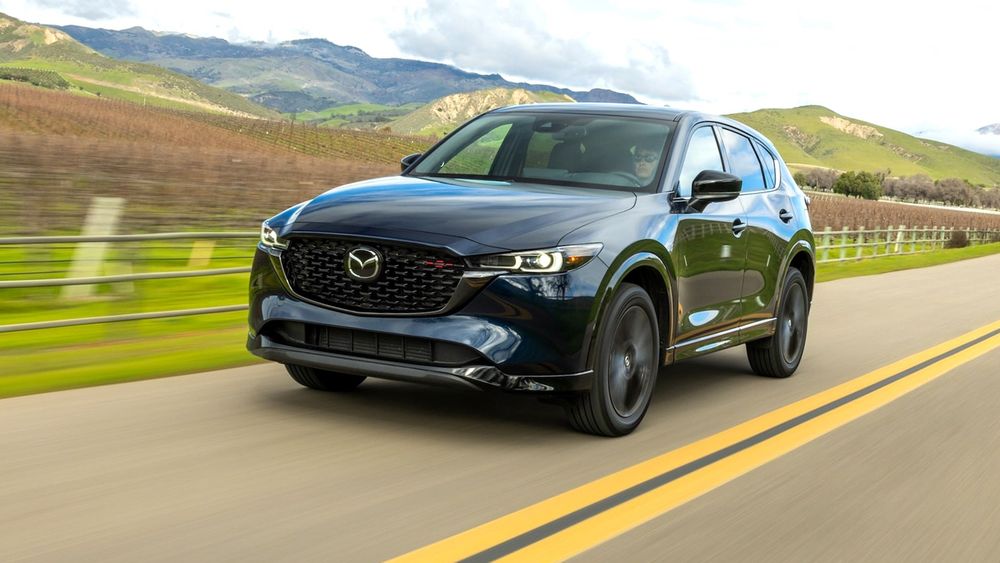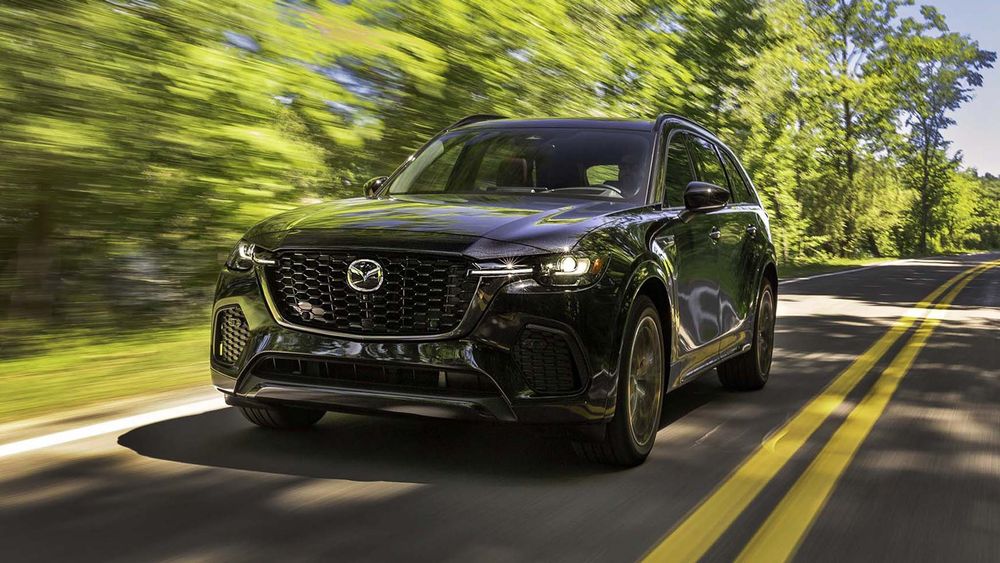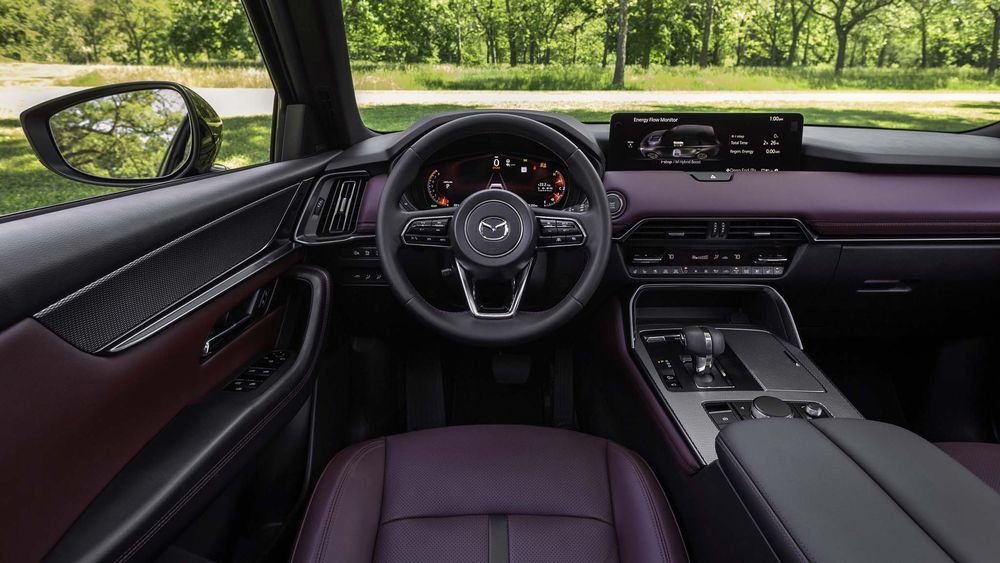2025 Mazda SUV Lineup: CX-50 Goes Hybrid, CX-70 Challenges Midsize Segment
From the CX-30 to the CX-90, every Mazda SUV receives some updates this year.
Mazda has made some big changes to its SUV lineup these last couple years. It replaced the CX-9 three-row with the CX-90 for 2024, and this model year, the five-passenger midsize CX-70 taps-in, along with a new hybrid variant of the rugged CX-50. Now, the majority of Mazda SUVs offer a hybrid powertrain.
0:00 / 0:00
Those aren’t the only updates this year, though. Keep reading to see what’s new on every 2025 Mazda SUV.
2025 Mazda CX-30: What’s New
A new color—Aero Gray Metallic from the MX5 Miata roadster—and available Alexa voice assistant starting with the Select Sport trim are the only updates this year for the CX-30. The subcompact SUV arrived new for 2020, but the last few model years brought some notable upgrades. For 2023, it got a stronger, more efficient base engine, and the next year it (finally) scored an available touchscreen.
2025 Mazda CX-30 Pros and Cons
Pros
- Quick Turbo models
- Attractive premium styling
- Strong safety record
- Finally, an available touchscreen
Cons
- Cramped rear passenger and cargo spaces
- Stiff ride
- Lacks athleticism
- On the pricey side
2025 Mazda CX-5: What’s New
Mazda may be winding down this generation of the CX-5, but it continues to fatten the model’s feature content. Two grades with the base non-turbo engine make gains this year. The Carbon Edition 2.5 S picks up wireless Apple CarPlay and Android Auto and a wireless phone charging pad. Further up the trim walk, the CX-5 Premium Plus 2.5 S receives a standard 360-degree camera and front and rear parking sensors.
2025 Mazda CX-5 Pros and Cons
Pros
- Fun to drive
- Modern exterior design
- Good safety ratings
- Wide-opening rear doors
Cons
- Lackluster efficiency
- Small cargo hold
- Tight rear seating
2025 Mazda CX-50: What’s New
The CX-50 lineup adds a new hybrid variant. It uses a powertrain developed by Toyota that employs a 2.5-liter naturally aspirated inline-four-cylinder, battery, three electric motors, and CVT automatic. Its 219 hp is more than the base engine’s 187 hp and less than the CX-50 Turbo’s 227 hp, making the hybrid something of a goldilocks setup. Shoppers looking for a more fuel-efficient CX-50 will be thrilled with the gas-electric model’s estimated 39/37 mpg city/highway.
Mazda also optimized the non-turbo engine so it’s more efficient this year, adding 1 mpg in city and highway driving for an estimated 25/31 mpg. Vehicle exit warning, rear seat alert, and automatic emergency braking with nighttime pedestrian detection and head-on collision mitigation are new standard driver assists, while front cross-traffic alert is newly available. The available 360-degree camera gets a new see-through function that makes the Mazda SUV appear transparent on the screen for aided visibility while parking. All grades now include Alexa voice assistant, and the CX-50 Hybrid picks up an available red leather interior.
2025 Mazda CX-50 Pros and Cons
Pros
- Now available as a hybrid
- Upscale interior
- Athletic reflexes
- Fetching design
Cons
- Limited cargo capacity
- Firm ride quality
- Demanding steering
2025 Mazda CX-90: What’s New
All CX-90 PHEV models and the 3.3 Turbo Preferred gain standard technology that includes the upgrade 12.3-inch infotainment display, wireless Apple CarPlay and Android Auto, a wireless phone charger, and front and rear parking sensors. There is now a six-seat configuration for the top 3.3 Turbo S Premium Plus model with second-row captain’s chairs and a two-person third row. Finally, Mazda has streamlined the CX-90 trim walk, adding Premium Sport models for 3.3 Turbo and PHEV but retiring the 3.3 Turbo Preferred Plus and Premium, Turbo S base, and PHEV Premium models.
2025 Mazda CX-90 Pros and Cons
Pros
- Capable powertrains
- Good ride and handling balance
- Attractive styling
- Premium cabin
Cons
- Rear space trails rivals
- On the pricey side
- Touchscreen requires phone mirroring
2025 Mazda CX-70: All-New Model
“All-new” might be overselling a smidge with this Mazda two-row midsize SUV model that shares a lot with the also relatively new CX-90, but it does come with some distinctions. The underpinnings, powertrains, and much of the exterior and interior styling are shared, but the CX-70 stands apart with specific front and rear bumper treatments, smoked instead of polished chrome, and black accents. Both Mazda SUVs are offered with either a 280-hp or 340-hp mild-hybrid inline-6 or a 2.5-liter inline-4 plug-in hybrid powertrain that delivers 323 hp.
The topline difference is the CX-70’s two rows of seats, compared with the 90’s three rows. As one could reasonably expect, there’s a lot more cargo capacity in the 70, which also receives a fairly large hidden storage compartment under the rear floor. This model also receives Unresponsive Driver Support emergency deceleration and stopping that isn’t on the 90 (yet). Unique exterior hues, leather colors, and wheels further distinguish Mazda’s two midsize SUVs.
2025 Mazda CX-70 Pros and Cons
Pros
- Good driving dynamics for a big SUV
- Strong engines
- Plenty of cargo space
Cons
- Some of the exterior trim looks cheap
- Steering not very direct
- Sluggish gearshifts in Normal mode
2025 Mazda SUVs: What’s New
- 2025 Mazda CX-30: minor update
- 2025 Mazda CX-5: minor update
- 2025 Mazda CX-50: significant update
- 2025 Mazda CX-90: minor update
- 2025 Mazda CX-70: all-new model
My dad was a do-it-yourselfer, which is where my interest in cars began. To save money, he used to service his own vehicles, and I often got sent to the garage to hold a flashlight or fetch a tool for him while he was on his back under a car. Those formative experiences activated and fostered a curiosity in Japanese automobiles because that’s all my Mexican immigrant folks owned then. For as far back as I can remember, my family always had Hondas and Toyotas. There was a Mazda and a Subaru in there, too, a Datsun as well. My dad loved their fuel efficiency and build quality, so that’s how he spent and still chooses to spend his vehicle budget. Then, like a lot of young men in Southern California, fast modified cars entered the picture in my late teens and early 20s. Back then my best bud and I occasionally got into inadvisable high-speed shenanigans in his Honda. Coincidentally, that same dear friend got me my first job in publishing, where I wrote and copy edited for action sports lifestyle magazines. It was my first “real job” post college, and it gave me the experience to move just a couple years later to Auto Sound & Security magazine, my first gig in the car enthusiast space. From there, I was extremely fortunate to land staff positions at some highly regarded tuner media brands: Honda Tuning, UrbanRacer.com, and Super Street. I see myself as a Honda guy, and that’s mostly what I’ve owned, though not that many—I’ve had one each Civic, Accord, and, currently, an Acura RSX Type S. I also had a fourth-gen Toyota pickup when I met my wife, with its bulletproof single-cam 22R inline-four, way before the brand started calling its trucks Tacoma and Tundra. I’m seriously in lust with the motorsport of drifting, partly because it reminds me of my boarding and BMX days, partly because it’s uncorked vehicle performance, and partly because it has Japanese roots. I’ve never been much of a car modifier, but my DC5 is lowered, has a few bolt-ons, and the ECU is re-flashed. I love being behind the wheel of most vehicles, whether that’s road tripping or circuit flogging, although a lifetime exposed to traffic in the greater L.A. area has dulled that passion some. And unlike my dear ol’ dad, I am not a DIYer, because frankly I break everything I touch.
Read More

